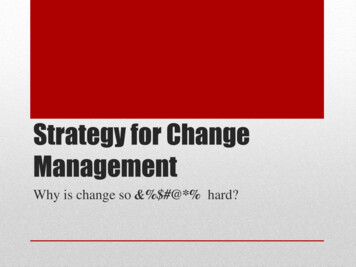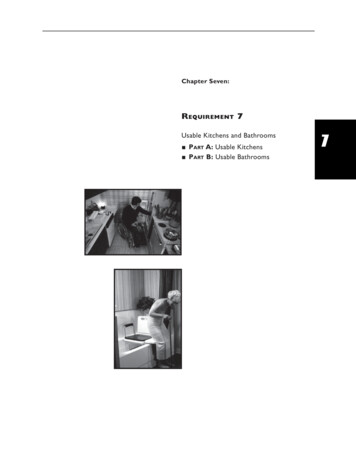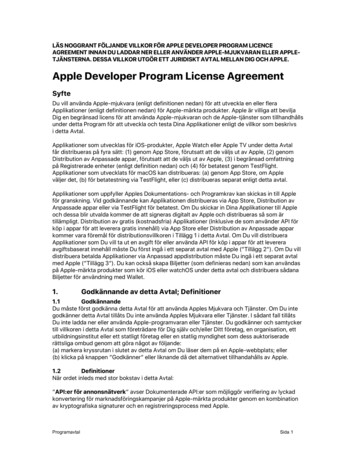
Transcription
Strategy for ChangeManagementWhy is change so &% #@*% hard?
I’m a big Learning Nerd. I try to help people do the right thing (whatever that is). Dual background in Instructional Design and UX (butwe called it HCI then). Perpetually fascinated by when people know the rightthing to do, but don’t do it.Why I care about this Usable Learning 2013
It’s not magic (though I wish it was). I can’t fix the entire culture of your company (and thatprobably shouldn’t be your goal). The words “fast” and “change” are frequentlyoxymoronic.A Few Disclaimers Usable Learning 2013
Linn followed his old boss to a newcompany. His boss just got hired as theDirector of User Experience for a companythat makes medical record software. The company has never had actual UXdesigners before. Previously the softwarewas designed by medical record expertsworking with programmers and a graphicdesigner. Linn is working with a group to update therecord entry function, but he’s getting a lotof resistance to all his suggestions. He’sbeen told that they are already behind withthe next features release, and there’s notime to involve users in the process.Meet Linn Usable Learning 2013 In particular, he’s been dealing with hisnemesis, Carl. Carl is an old school medicalrecords expert, who doesn’t really believeLinn can tell him anything about themedical record design.
Gina is the product manager of one ofthe largest real estate search applications. They just released their next generationsearch application, which significantlyredesigned the search process, and arecurrently running both versions. Customers who are subscribed to the firstgen system do not have to switch to thenext gen system, and are resistantbecause while the older system ishorrible, it’s very familiar andcomfortable horribleness for experienced(and vocal) power users.Meet Gina Usable Learning 2013
WHY *IS* CHANGE SO&% #@*% HARD?
Change ProgressionGroup BehaviorsTimeIndividual BehaviorsAttitudeKnowledgeEffortChange process Usable Learning 2013
FamiliarizationComprehensionConscious EffortConscious ActionProficiencyUnconscious CompetenceReason #1: Unlearning isdifficult- From Electronic Performance Support Systems by Gloria Gery Usable Learning 2013
This process takes a while Usable Learning 2013
Glucose Metabolic Rate after several weeks of Tetris Practice- (Haier et al 1992) Usable Learning 2013
When you are used to this Usable Learning 2013
Reason #2: Cognitive Load- Shiv and Fedorikhin 1999 - Heart and Mind in Conflict: The Interplay of Affect and Cognition in ConsumerDecisionMaking UsableLearning2013
Willpower and Ego Depletion Usable Learning 2013
Reason #3: RationalDecision Making- Damasio, Descartes' Error: Emotion, Reason, and the Human Brain Usable Learning 2013
Suspension /documentos/dutton&aron1974.pdfPhoto by Mike Taylor Usable Learning 2013
Y’know, I justlike the *feel* ofno-load mutualfunds We struggle without thatemotional tug Usable Learning 2013
The emotional element iselephant-sizedJonathan Haidt, The Happiness Hypothesis Usable Learning 2013
The Rider Usable Learning 2013
The Elephant Usable Learning 2013
So, when there’s a conflict Who do you think wins? Usable Learning 2013
Meet my friend Sandra:Reason #4: TheElephant isn’tstupid Usable Learning 2013
This sucks I amnot doing thisagain why would somebody wantto repeat it?If the initial experience is bad Usable Learning 2013
Behavioral Reinforcment Usable Learning 2013
The elephant cares about what’shappening *right now*.Maybe I shouldconsiderretirementplanning Reason #5: Immediacy Usable Learning 2013
And the future is sooooo far away Usable Learning 2013
We have trouble with this Usable Learning 2013
Characteristics of a fraught decision: Benefits Now – Costs Later (or CostsNow – Benefits Later) Degree of Difficulty Frequency Feedback Knowing What You LikeSometimes the changes aredownright fraught Usable Learning 2013
Reason #6: We strugglewith big and fuzzy things. Usable Learning 2013
the-ma-New-Yorker-CartoonPrints i8562959 .htmWe think we are beingclear Usable Learning 2013
Mental models and closetsAn Expert Mental Model Usable Learning 2013A Novice Mental Model
It seemed to take alot longer on theway here.The first time isthe most difficult. Usable Learning 2013
People personalize messagesYOU arewrong.We need tochangeeverything.Everythingyou are doingis wrong.And bad.And your kidis ugly.Reasons #7: People don’t liketo hear their baby is ugly Usable Learning 2013
It makes them defensive Usable Learning 2013
Maslow’s HierarchyPlus WiFiHow can we help them feel safe? Usable Learning 2013
IDENTIFYING GAPSWhat stands between now and the glowingperfect future?
Catching a redeye Friday -4Duh. Zombies 5CheapTheater 3Should I gosee WorldWar Z onSaturday?Scary!-19:45 pm-2Total 8Force Field AnalysisBy Kurt Lewin Usable Learning 2013Total-7
Linn followed his old boss to a newcompany. His boss just got hired as theDirector of User Experience for a companythat makes medical record software. The company has never had actual UXdesigners before. Previously the softwarewas designed by medical record expertsworking with programmers and a graphicdesigner. Linn is working with a group to update therecord entry function, but he’s getting a lotof resistance to all his suggestions. He’sbeen told that they are already behind withthe next features release, and there’s notime to involve users in the process.Meet Linn Usable Learning 2013 In particular, he’s been dealing with hisnemesis, Carl. Carl is an old school medicalrecords expert, who doesn’t really believeLinn can tell him anything about themedical record design.
Gina is the product manager of one ofthe largest real estate search applications. They just released their next generationsearch application, which significantlyredesigned the search process, and arecurrently running both versions. Customers who are subscribed to the firstgen system do not have to switch to thenext gen system, and are resistantbecause while the older system ishorrible, it’s very familiar andcomfortable horribleness for experienced(and vocal) power users.Meet Gina Usable Learning 2013
With 2-3 people at your table, take a change in your worldand create a force field analysis.Steps: 1) Identify driving and restraining forces 2) Rate each force from /- 1-5 in strength 3) Total forces for each side.Now you try Usable Learning 2013change
“Reasons why they aren’t doing the rightthing” checklist http://bit.ly/rightthinglistYour special gift just forcoming in today Usable Learning 2013
LET’S TALK ABOUT GOALSAnd why you aren’t going to change thewhole culture (at least not right away)
Break it down Usable Learning 2013
Breaking down GOALSImage Credit – Sebastian sign Usable Learning 2013
If this is overwhelming Usable Learning 2013
Follow the froghttp://www.youtube.com/watch?v 3iIkOi3srLo Usable Learning 2013
The magic question Usable Learning 2013
Shrink the change – what is a small, concrete action theycan take? Can you create immediate, short-term and long-termgoals for the change? What are the visible behaviors? Can we steer towardsthem?Creating Goals Usable Learning 2013
I want them toadopt UXdesignthinking as aphilosophy.1) Identify an overall goal2) Identify smaller sub-goals thatwould support the overall goal3) Identify some concretebehaviors that show thebehaviors Linn followed his old boss to a newcompany. His boss just got hired as theDirector of User Experience for a companythat makes medical record software. The company has never had actual UXdesigners before. Previously the softwarewas designed by medical record expertsworking with programmers and a graphicdesigner. Linn is working with a group to update therecord entry function, but he’s getting a lotof resistance to all his suggestions. He’sbeen told that they are already behind withthe next features release, and there’s notime to involve users in the process. In particular, he’s been dealing with hisnemesis, Carl. Carl is an old school medicalrecords expert, who doesn’t really believeLinn can tell him anything about themedical record design.Define Goals Usable Learning 2013
Gina is the product manager of one ofthe largest real estate search applications. They just released their next generationsearch application, which significantlyredesigned the search process, and arecurrently running both versions. Customers who are subscribed to the firstgen system do not have to switch to thenext gen system, and are resistantbecause while the older system ishorrible, it’s very familiar andcomfortable horribleness for experienced(and vocal) power users.Define goals Usable Learning 20131) Identify an overall goal2) Identify smaller sub-goals thatwould support the overall goal3) Identify some concretebehaviors that show thebehaviors
With 2-3 people at yourtable, take a change in yourworld and define goals.Steps: 1) Identify an overall goal 2) Identify smaller sub-goalthat would support theoverall goal 3) Identify some concretebehaviors that show thebehaviorsNow you try Usable Learning 2013Change XYZ
How many psychologists does it take tochange a lightbulb? Just one, but the lightbulb has to reallywant to change.Okay . Usable Learning 2013
WAYS TO MOTIVATE CHANGE- Or – talking to the elephant
TheriderknowsthingsBut theelephantbelievesKnowledge vs. Belief Usable Learning 2013
Let’s talk about 011/VHIL-technical-report.pdf Usable Learning 2013
Design for the elephanthttp://www.youtube.com/watch?v R0LCmStIw9E Usable Learning 2013
UserTestingWebexHow do we createvisceral experiences? Usable Learning 2013
Technology Acceptance Model (TAM)PerceivedUsefulnessPerceivedEase of UseIt’s about perception Usable Learning 2013TechnologyAcceptance
Relative abilityCharacteristics of InnovationEverett Rogers , Diffusion of Innovations Usable Learning 2013
The infamous QWERTY Keyboard Usable Learning 2013
Ever seen the Dvorak Keyboard? Usable Learning 2013
1. Relative Advantage2. Compatibility3. Complexity4. Trialability5. ObservabilityLet’s apply these to keyboards: Usable Learning 2013
Social Proof– or why I’m always overdressed in San Francisco Usable Learning 2013
Message 1Message 2“Your income tax dollars are spenton services the we Minnesotansdepend on [education, helping theneedy, essential services, etc.] .“ According to a recent publicopinion survey, many Minnesotansbelieve other people routinelycheat on their taxes.When taxpayers do not pay whatthey owe, the entire communitysuffers.”This is not true, however. Audits bythe Internal Revenue Service showthat people who file tax returnsreport correctly and pay voluntarily93 percent of the income taxes theyowe .”No discernible effect.Social NormsModerate effect overall &Significant effect intargeted axcompliance.php Usable Learning 2013
If you are a middle school student:Who are your opinion-leaders? Usable Learning 2013
Short videoswith ruralfarmers inIndiaWho models the /04/03/where-youtube-meets-the-farm/? r 0 Usable Learning 2013
Enlisting them Usable Learning 2013
Opinion Leaders, Testimonials, SuccessStories Usable Learning 2013
Types of Adopters- From Diffusion of Innovations by Everett Rogers Usable Learning 2013
ChasmInnovation Chasm- From Crossing the Chasm – Geoffrey A Moore Usable Learning 2013
Some people are juststubborn Usable Learning 2013
Are you dealing with a conflict or aproblem? Can you make them feel safe /respected / included? Can you say “Yes, and ” Is there something you *should* behearing here?Dealing with difficult Usable Learning 2013
How do your users feel?done toono controlfixed mindsetI doin controlgrowth mindsetDo they have self-efficacy?- Mindset, by Carol Dweck Usable Learning 2013
MAKING IT HAPPENSteps for action
1/ Knowledge Stage2/ Persuasion Stage3/ Decision Stage4/ Implementation Stage5/ Confirmation StageInnovation Decision Process- From Diffusion of Innovations by Everett Rogers Usable Learning 2013
Avoid cycles of failure Usable Learning 2013
Create opportunities topractice Usable Learning 2013
SelfconfirmationbiasI’m saying this out loudso I must think it’s true! Usable Learning 2013
Sunk cost investment Usable Learning 2013
Can I put a sign in your yard?Start small Usable Learning 2013
What does thefeedback loop looklike? How do they knowthey are doing well?Feedback Usable Learning 2013
1.Can they viscerally experiencethe need for change?2.Can they see utility and ease ofuse?3.How do they observe others?Who are they seeing?4.How do they dip their toe in?How can they safely andpositively try it out?5.How do they have autonomyand control? How do they feelsafe?6.How are they getting feedback?Making Change Happen Usable Learning 2013
1.Make it real: Can theyviscerally experience theneed for change?2.Can they see utility and easeof use?3.How do they observeothers? Who are theyseeing?4.How do they dip their toein? How can they safely andpositively try it out?5.How do they have autonomyand control? How do theyfeel safe?6.How are they gettingfeedback?Take your change, and addressthe six questions:1)2)3)4)5)6)Now you try Usable Learning 2013
REINFORCING ANDMAINTAININGChange is sloooooooooooow
Fix the environment Usable Learning 2013
Environment Matters Usable Learning 2013
Make it easy for people tosucceed Usable Learning 2013
Create anenvironmentthat supportsthem Usable Learning 2013
Change is a process,not an event.I need to get this on a coffee mug. Usable Learning 2013
it’s just hardSometimes it’s notcomplicated Madrigal, A. “When the Nerds Go Marching In.” The Atlantic, November 16, 2012. Available /11/whenthe-nerds-go-marching-in/265325/. Mentioned by Russell Davies: its-not-complicated-its-just-hard.html Usable Learning 2013
Progress“This isn’tWORKING!”#despairTime Successful change lookslike this Usable Learning 2013
Then do it again:Planning QuestionsIdentify GoalsForce Field Analysischange1) Identify driving andrestraining forces2) Rate each force from /1-5 in strength3) Total forces for eachside.2. Can they see utility andease of use?3. How do they observeothers? Who are theyseeing?1) Identify an overall goal2) Identify smaller sub-goalthat would support theoverall goal3) Identify some concretebehaviors that show thebehaviorsWe still have time? Usable Learning 20131. Make it real: Can theyviscerally experience theneed for change?4. How do they dip theirtoe in? How can theysafely and positively tryit out?5. How do they haveautonomy and control?How do they feel safe?6. How are they gettingfeedback?
Julie Dirksenjulie@usablelearning.comTwitter: usablelearningDesign For How People LearnQuestions? Usable Learning 2013
Shiv, B. and A. Fedorikhin. 1999. Heart and Mind in Conflict: Interplay of Affect and Cognition inConsumer Decision Making. Journal of Consumer Research 26 (December): 278–282.Haidt, Jonathan, The Happiness Hypothesis (book)Gery, Gloria, Electronic Performance Support Systems (book)Haier, R.J., B.V. Siegel Jr., A. MacLachlan, E. Soderling, S. Lottenberg, and M.S. Buchsbaum. 1992Regional glucose metabolic changes after learning a complex visuospatial/motor task: a positron emissiontomographic study. Brain Research 570: 134–14.Thaler, Richard and Sustein, Cass. Nudge (book)Okita, S.Y., J. Bailenson, and D.L. Schwartz. 2008. Mere Belief of Social Action Improves ComplexLearning. Proceedings of the 8th International Conference for the Learning Sciences.Johnson, Eric J. and Goldstein, Daniel G., Do Defaults Save Lives? (Nov 21, 2003). Science, Vol. 302, pp.1338-1339, 2003. Available at SSRN: http://ssrn.com/abstract 1324774Norman, Donald, The Design of Everyday Things (book)reene and Paxton, Patterns of Neural Activity Associated with Honest and Dishonest Moral Decisions,PNAS 106:12506-12511 (July 28, 2009).Prochaska, JO; Norcross, JC; DiClemente, CC. Changing for good: the revolutionary program that explainsthe six stages of change and teaches you how to free yourself from bad habits. New York: W. Morrow; 1994Rogers, Everett Diffusion of Innovations (book)References Usable Learning 2013
Planning QuestionsForce Field AnalysisIdentify Goals1. Make it real: Can theyviscerally experience theneed for change?change1) Identify driving andrestraining forces2) Rate each force from /1-5 in strength3) Total forces for eachside.2. Can they see utility andease of use?3. How do they observeothers? Who are theyseeing?1) Identify an overall goal2) Identify smaller sub-goalthat would support theoverall goal3) Identify some concretebehaviors that show thebehaviorsTools for Change Usable Learning 20134. How do they dip theirtoe in? How can theysafely and positively tryit out?5. How do they haveautonomy and control?How do they feel safe?6. How are they gettingfeedback?
Usable Learning 2013 Meet Linn Linn followed his old boss to a new company. His boss just got hired as the Director of User Experience for a company









![Change Management Process For [Project Name] - West Virginia](/img/32/change-20management-20process-2003-2022-202012.jpg)

